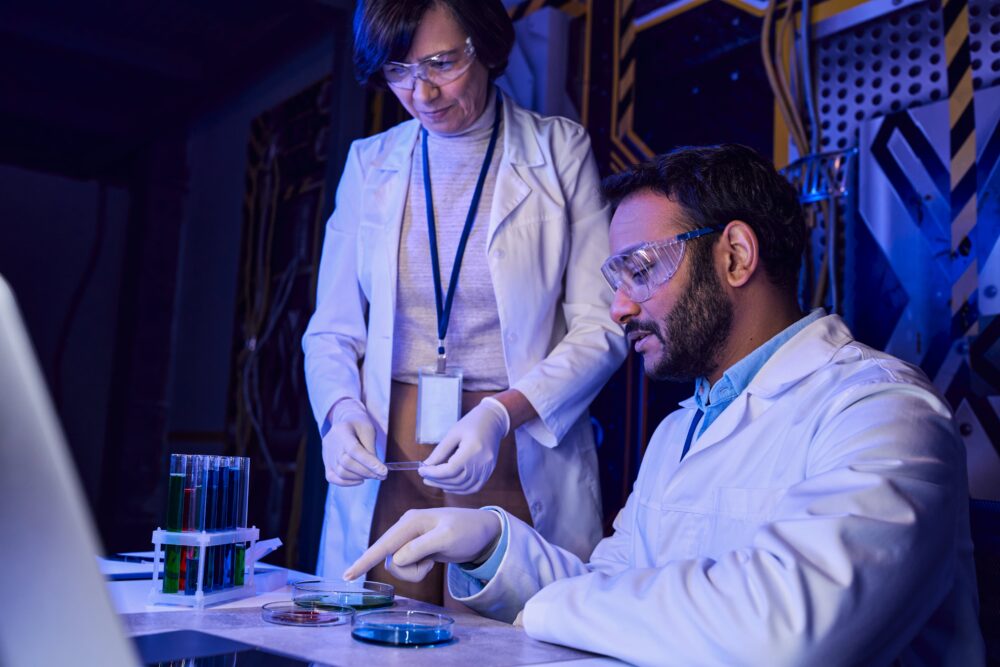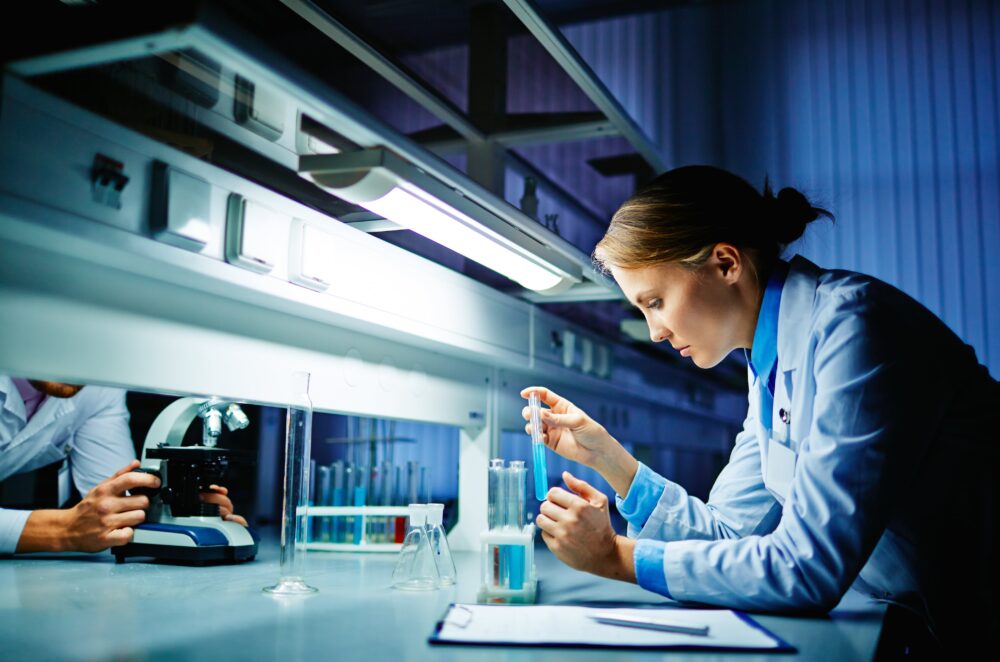In a recent roundtable, Andreas Kalcker, PhD, presented a detailed understanding of chlorine dioxide as an “electromolecular regulator” of disease.
During a September 2025 medical roundtable, biophysicist Andreas Kalcker presented his research and clinical experiences on the use of chlorine dioxide (ClO₂) in medicine. Kalcker, co-author of Molecular and Genetic Medicine, has spent more than two decades studying the compound and proposes a therapeutic model in which ClO₂ is used as a targeted electromolecular agent to correct what he describes as energetic failures underlying disease.
“Illness is not just pathogen overgrowth or receptor failure,” Kalcker told the audience, “it’s an energetic low-voltage terrain in which oxidative therapies can restore order.”
In discussion with host Richard Amerling, MD, Kalcker stressed throughout the session that this therapy requires precise preparation, knowledge, and medical supervision. He cautions that chlorine dioxide is not a cure-all but highlights its potential applications in infections, chronic inflammation, and oncology when applied correctly.
Sound similar? Read this PMC paper on ozone therapy.
And don’t miss this comprehensive database of all scientific publications related to chlorine dioxide and its therapeutic applications.
Electromolecular medicine is a discipline based on the understanding and application of biophysics and electricity in the field of medicine.


Better Understanding Chlorine Dioxide and Oxidation
At the core of Andreas Kalcker’s presentation is a reframing of oxidation as an electrical, rather than purely chemical, process. He explains that when cells or pathogens are exposed to oxidants, the effect depends less on their chemical identity and more on their electron pressure or voltage level. High-voltage oxidants like hydroxyl radicals can damage human tissue; chlorine dioxide, however, operates at a lower redox potential (around 940 mV)—close to that of human cells—allowing targeted oxidation without cellular injury.
“It’s burning, yes, but the question is how much,” Kalcker said. “A small flame won’t hurt your finger. The same happens with oxidation: it’s about voltage and pressure. Chlorine dioxide works at the same level as our cells.”
Kalcker notes that this mechanism closely mirrors what the immune system already does. During an oxidative burst, macrophages and NK cells generate hydrogen peroxide (H₂O₂) to neutralize pathogens. Chlorine dioxide, he argues, behaves in a comparable way—except it can be administered externally or locally in controlled amounts to amplify the body’s own defense mechanisms.
Chemically, he underscores a crucial distinction: chlorine dioxide does not contain chlorine molecules. Once inside the body, it dissociates into a chlorine ion and oxygen, with the oxygen contributing to increased electromolecular charge potential in tissues. This, he says, is why the compound differs fundamentally from bleach or sodium hypochlorite.
Kalcker also highlighted its practical surgical implications, including the ability of low-concentration solutions to increase blood zeta potential and pure solutions to stop bleeding without clotting by inducing smooth muscle contraction in vessels.
“You put it on the cut, hold it for 30 seconds, and the bleeding stops—but not by coagulation. It’s an electrical reflex,” he explained.
Mechanism: A Different Approach to Oxidation
Kalcker distinguishes chlorine dioxide from traditional chemical disinfectants, emphasizing that its medical use involves controlled concentrations and biophysical targeting rather than indiscriminate chemical action. In his model, ClO₂ acts as a pH-selective oxidant that dissociates in acidic environments—those commonly found in inflamed or infected tissues. This, he says, allows for localized oxidative effects without cellular damage.
“Chlorine dioxide is a gas, not bleach. It’s selective. It works only where the problem is—where acidity and low voltage are,” Kalcker explained.
He cites its redox potential of approximately 940 mV, which he argues sits below damaging oxidants such as ozone (~2,070 mV) and hydroxyl radicals (~2,800 mV). This, he says, allows the molecule to oxidize pathogens that cannot maintain voltages above 90 mV, while sparing healthy tissue.
Scientific literature supports ClO₂’s antimicrobial properties in vitro. For example, a 2021 study by Ogata and Miura, published in Scientific Reports, showed strong antiviral activity of low-concentration chlorine dioxide gas against SARS-CoV-2. Other research, including Noszticzius et al., 2013, explored ClO₂’s size-selective oxidation as a theoretical basis for targeted antimicrobial action.
FIND: A list of published studies of Chlorine Dioxide here.
Electromolecular Medicine — Collective Cellular Communication to Kill Disease
Kalcker’s framework centers on electromolecular medicine, a concept that views health through the lens of cellular energy and bioelectrical communication. According to him, healthy tissues maintain stable voltage and can dissipate excess electrons, while diseased or inflamed areas lose this capacity. This “energetic terrain,” he argues, becomes a niche where pathogens thrive.
“A biophysicist has a rule: illness is a lack of energy,” he said. “You can use toxins to provoke a reaction, or you can give energy back to the cells and help them up.”
In this model, chlorine dioxide would function as an electromolecular regulator—releasing oxygen and redox potential in acidic, low-voltage zones, thereby destabilizing pathogens and re-energizing tissue. Kalcker contrasts this with pharmacological receptor-targeting, describing his approach as “physically driven, not chemically forced.”
Therapeutic Applications — The Dos and Don’ts
Kalcker presented several clinical scenarios in which he claims chlorine dioxide has shown benefit: viral and bacterial infections, chronic inflammatory conditions such as psoriasis and vitiligo, and even as an adjunct in oncology, where its vascular effects might restrict tumor blood supply.
“It is not a miracle. It’s chemistry and physics, and it must be done correctly,” Kalcker emphasized. “I do not encourage anyone to use this therapy without proper knowledge.”
He referred to “Protocol C”, in which small doses of CDS are diluted in water and ingested throughout the day, and topical applications where microvascular constriction is observed within seconds. Kalcker also mentioned using low-concentration injections around tumors under strict conditions. However, he warns of risks—particularly with large internal tumors, where necrosis could trigger sepsis. He also notes limitations in Type 1 diabetes and nerve damage, conditions where energetic restoration alone may be insufficient.
Case Studies and Market Readiness
Kalcker also discussed a range of anecdotal case reports from his network, citing examples of dermatological recovery, inflammation control, and tumor regression under carefully controlled conditions. While these accounts remain unverified and non-randomized, they form part of the narrative driving interest in ClO₂ among some practitioners.
“We see changes within hours in some cases. But this is not for amateurs. It must be done right, or not at all,” he said.
Currently, no major pharmaceutical companies market chlorine dioxide as a medical product, though small niche suppliers and clinics in Latin America and parts of Europe offer CDS protocols. Regulatory bodies such as the FDA and EMA maintain firm warnings against unapproved medical use.
Kalcker acknowledges the scientific and political obstacles ahead, calling for formal research and medical training to explore electromolecular medicine systematically. Whether this will remain a fringe therapy or move into formal evaluation depends on future clinical trials and toxicological transparency.
Next Steps: Electromolecular, Energy-based Therapeutics
The chlorine dioxide debate straddles frontier biophysics and regulatory caution. Kalcker’s framing of ClO₂ as an electromolecular agent, not a bleach or panacea, aims to reorient medical thinking around energy, redox balance, and selective oxidative therapies.
For medical professionals, the key takeaway is critical engagement with electromolecular concepts and rigorous demands for evidence. As Kalcker put it:
“We have to humble ourselves. Medicine is not finished. There’s more to learn.”
More Sources:
- https://www.sciencedirect.com/science/article/pii/S194439862500356X
- https://www.nature.com/articles/s41598-025-01852-z
- https://www.mdpi.com/1660-4601/14/3/329
- https://idiclo2.com/about/chlorine-dioxide/
- https://www.clinicaltrials.gov/study/NCT04343742
- https://ijmra.in/v8i3/54.php
- https://esmed.org/MRA/mra/article/view/3279











